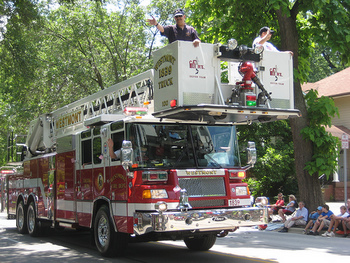Emergency Preparedness Strategy Paper
Emergency Preparedness Strategy Summary

Table of Contents
- Acknowledgments
- Executive Summary
- Issues, Challenges, Opportunities
- Understanding Existing Conditions
- A New Vision for Emergency Preparedness
- Recommendations
- Goals & Strategies Related to Indicators
- Appendices
Home to more than eight million people, the Chicago metropolitan area is the capital of the American heartland, serving as a major hub for coast-to-coast travel, commerce, industry, and national security. Many of these strengths place our region at great risk of experiencing a major emergency or catastrophic disaster such as a terrorist attack, pandemic flu, hazardous materials shipping accident, or nuclear reactor mishap (with eleven reactors in the Chicago metropolitan area). And the region's most common natural challenges—floods, tornadoes, and blizzards—seem to be occurring in increasing numbers due to climate change and the environment.
Because of these vulnerabilities, it is crucial that both the emergency response community and the region's 8.6 million residents be well prepared for disaster. While progress is being made, research indicates that more needs to be done to reduce the potential for loss of life, minimize the amount of damage, and enable the quickest recovery possible should disaster occur.
This strategy paper evaluates the current state of emergency preparedness in the Chicago metropolitan region, identifies key areas for improvement, and recommends detailed strategies aimed at developing a comprehensive "culture of preparedness" throughout our region.
A sample of findings:
Personal Preparedness
A 2006 report by the Council for Excellence in Government found that people in the Chicago metropolitan area are inadequately prepared for a catastrophic disaster; four out of ten people have done nothing to prepare. Some believe no preparation would be effective; others just lack a sense of urgency about it.
School Preparedness
Most emergency planning in schools today is built around the premise that school personnel only need to manage an emergency for a matter of minutes. However, the U.S. Department of Homeland Security and the U.S. Department of Education recommend schools are prepared to be self-sustaining for up to 72 hours in case a catastrophic event would prevent emergency responders from reaching the school.
Special Needs Preparedness
A key lesson learned from the Hurricane Katrina disaster was that many people are unwilling to leave their pets if their animals cannot be evacuated. There is currently no single comprehensive regional plan on evacuation and sheltering of pets and animals during an emergency.
If you're interested in learning more about education, please review the following CMAP strategy report. Comments and criticism are encouraged.
|
Links |